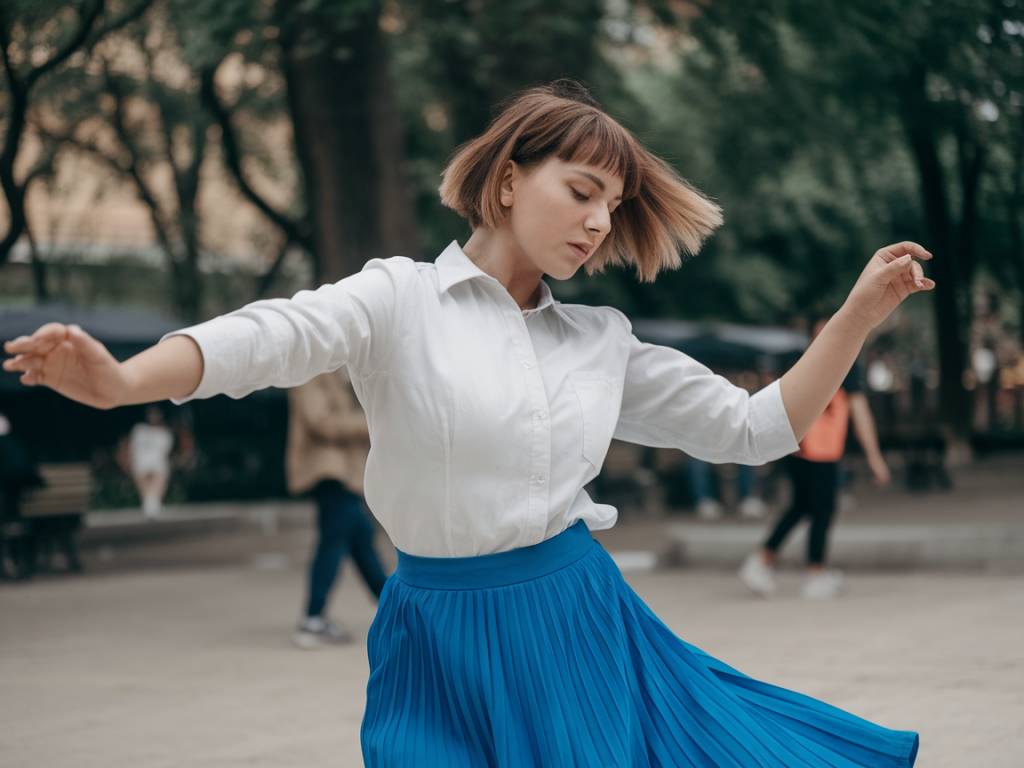Dance has long been celebrated as a form of expression, a medium through which people convey emotions, tell stories, and create art. But beyond its aesthetic appeal and cultural significance, dance offers a deeply personal experience. It provides a unique pathway to reconnect with oneself through movement. This article delves into the transformative power of dance, exploring how it fosters self-expression and guides individuals toward greater self-awareness.
The Essence of Dance and Self-Expression
At its core, dance is a form of non-verbal communication that transcends linguistic barriers. It allows people to express feelings and ideas that might be difficult to articulate through words. When you dance, you tap into a primal form of expression, harnessing the power of your body’s movements to convey a wide array of emotions.
The fluidity and freedom associated with dancing enable individuals to explore their identities and inner selves. By letting go of inhibitions and allowing the body to move instinctively, dancers can unlock a deeper understanding of their thoughts and emotions. This authentic form of self-expression is invaluable for personal growth and well-being.
The Psychological Benefits of Dance
Dance is not just an enjoyable activity; it also has numerous psychological benefits. Engaging in regular dance practice can significantly enhance mental health, providing a powerful antidote to the stresses of modern life.
The act of dancing can induce a state of flow, a psychological condition characterized by complete immersion and focused energy. This flow state helps reduce anxiety and boosts mood by releasing endorphins, the body’s natural « feel-good » chemicals. Additionally, dance can improve cognitive function, enhance memory, and increase overall mental agility.
Dance as a Tool for Emotional Expression
Emotional expression is a fundamental human need, and dance provides an outlet for releasing pent-up emotions. Whether it’s joy, sadness, anger, or love, dance allows individuals to experience and process their feelings in a healthy and constructive manner.
Different dance styles offer unique ways to express emotions. For example:
- Ballet: Known for its grace and precision, ballet is an excellent medium for conveying emotions like melancholy, longing, and romantic love.
- Contemporary Dance: This style emphasizes fluidity and freedom, making it ideal for expressing complex emotions and personal narratives.
- Hip-Hop: With its energetic and powerful movements, hip-hop is perfect for channeling emotions like empowerment, confidence, and resilience.
- Latin Dance: Styles such as salsa and tango are imbued with passion and excitement, offering a vibrant way to express joy and love.
By exploring different dance styles, individuals can find the one that resonates most with their emotional landscape, using movement as a therapeutic tool to navigate their inner world.
The Connection Between Dance and Mindfulness
Mindfulness, the practice of being fully present in the moment, is a key component of many wellness routines. Dance inherently fosters mindfulness, as it requires attention to the body’s movements, alignment, and rhythm.
When dancing, individuals must focus on their breath, the beat of the music, and the sensations within their bodies. This focus cultivates a heightened state of awareness, reducing distractions and promoting mental clarity. Dance becomes a moving meditation, grounding individuals in the present moment and fostering a deeper sense of connection with themselves.
Reconnecting with the Body Through Dance
In a world dominated by screens and sedentary lifestyles, many people experience a disconnect between their minds and bodies. Dance provides an opportunity to bridge this gap, encouraging individuals to tune into their physical sensations and movements.
Through consistent dance practice, people can develop a greater appreciation for their bodies’ capabilities and limitations. This improved body awareness can enhance coordination, balance, and flexibility, contributing to overall physical health. Moreover, dance can help individuals overcome body image issues by fostering a sense of confidence and self-acceptance.
Creating a Safe Space for Dance
To fully experience the benefits of dance, it is essential to create a safe and supportive environment. This space should encourage freedom of expression and be free from judgment or criticism.
Consider the following tips for creating an inviting dance space:
- Choose Comfortable Clothing: Wear attire that allows for freedom of movement and makes you feel confident.
- Set the Mood with Music: Curate a playlist that resonates with your emotions and inspires your movements.
- Find the Right Space: Ensure you have enough room to move freely and avoid any obstacles.
- Practice Self-Compassion: Be kind to yourself and approach your dance practice with a non-judgmental attitude.
By establishing a nurturing environment, you can fully immerse yourself in the dance experience, exploring your emotions and reconnecting with your inner self.
Starting Your Dance Journey
If you’re new to dance, beginning your journey can feel daunting. However, there are numerous resources and opportunities to help you get started:
- Online Tutorials: Platforms like YouTube offer a vast array of dance tutorials for all skill levels and styles.
- Local Dance Classes: Join a community dance class to learn from experienced instructors and connect with fellow dancers.
- Dance Apps: There are several apps designed to guide you through dance routines and track your progress.
- Dance Workshops: Attend workshops to dive deeper into specific dance styles and techniques.
Remember, the goal of dance is not perfection but self-expression and personal growth. Embrace the learning process and enjoy the journey as you discover the transformative power of dance.
In conclusion, dance offers a unique and powerful way to reconnect with yourself. By embracing movement, you can express emotions, cultivate mindfulness, and develop a deeper understanding of your inner world. Whether you’re an experienced dancer or a complete beginner, dance has the potential to enrich your life in countless ways. So, put on your dancing shoes, find a rhythm that speaks to you, and let your body lead the way toward self-discovery and expression.

